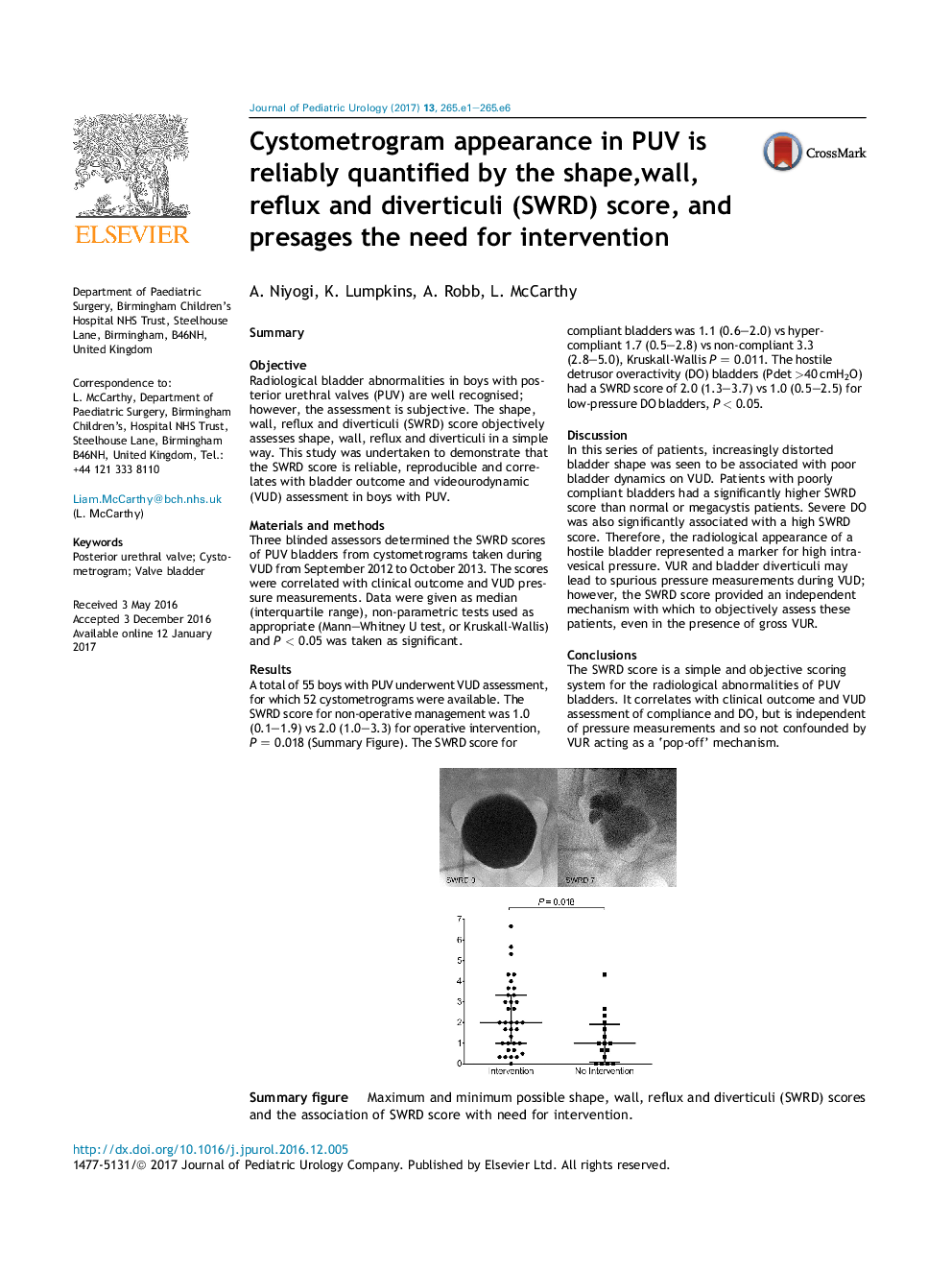| Article ID | Journal | Published Year | Pages | File Type |
|---|---|---|---|---|
| 5718583 | Journal of Pediatric Urology | 2017 | 6 Pages |
SummaryObjectiveRadiological bladder abnormalities in boys with posterior urethral valves (PUV) are well recognised; however, the assessment is subjective. The shape, wall, reflux and diverticuli (SWRD) score objectively assesses shape, wall, reflux and diverticuli in a simple way. This study was undertaken to demonstrate that the SWRD score is reliable, reproducible and correlates with bladder outcome and videourodynamic (VUD) assessment in boys with PUV.Materials and methodsThree blinded assessors determined the SWRD scores of PUV bladders from cystometrograms taken during VUD from September 2012 to October 2013. The scores were correlated with clinical outcome and VUD pressure measurements. Data were given as median (interquartile range), non-parametric tests used as appropriate (Mann-Whitney U test, or Kruskall-Wallis) and P < 0.05 was taken as significant.ResultsA total of 55 boys with PUV underwent VUD assessment, for which 52 cystometrograms were available. The SWRD score for non-operative management was 1.0 (0.1-1.9) vs 2.0 (1.0-3.3) for operative intervention, P = 0.018 (Summary Figure). The SWRD score for compliant bladders was 1.1 (0.6-2.0) vs hypercompliant 1.7 (0.5-2.8) vs non-compliant 3.3 (2.8-5.0), Kruskall-Wallis P = 0.011. The hostile detrusor overactivity (DO) bladders (Pdet >40 cmH2O) had a SWRD score of 2.0 (1.3-3.7) vs 1.0 (0.5-2.5) for low-pressure DO bladders, P < 0.05.DiscussionIn this series of patients, increasingly distorted bladder shape was seen to be associated with poor bladder dynamics on VUD. Patients with poorly compliant bladders had a significantly higher SWRD score than normal or megacystis patients. Severe DO was also significantly associated with a high SWRD score. Therefore, the radiological appearance of a hostile bladder represented a marker for high intravesical pressure. VUR and bladder diverticuli may lead to spurious pressure measurements during VUD; however, the SWRD score provided an independent mechanism with which to objectively assess these patients, even in the presence of gross VUR.ConclusionsThe SWRD score is a simple and objective scoring system for the radiological abnormalities of PUV bladders. It correlates with clinical outcome and VUD assessment of compliance and DO, but is independent of pressure measurements and so not confounded by VUR acting as a 'pop-off' mechanism.Download high-res image (245KB)Download full-size imageSummary figure. Maximum and minimum possible shape, wall, reflux and diverticuli (SWRD) scores and the association of SWRD score with need for intervention.
